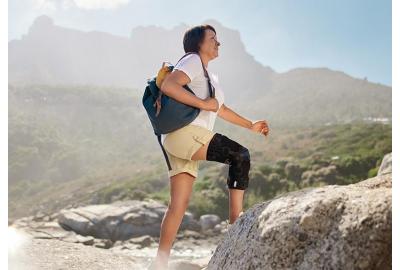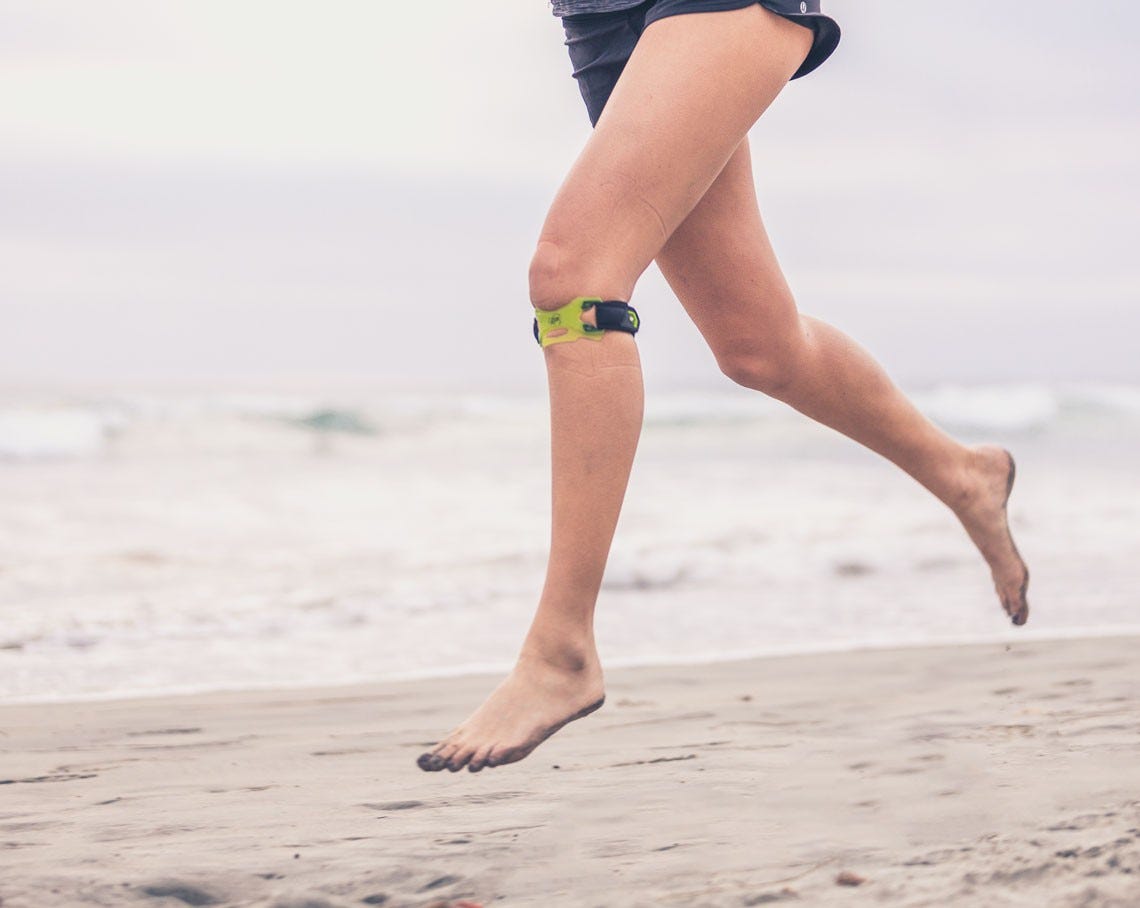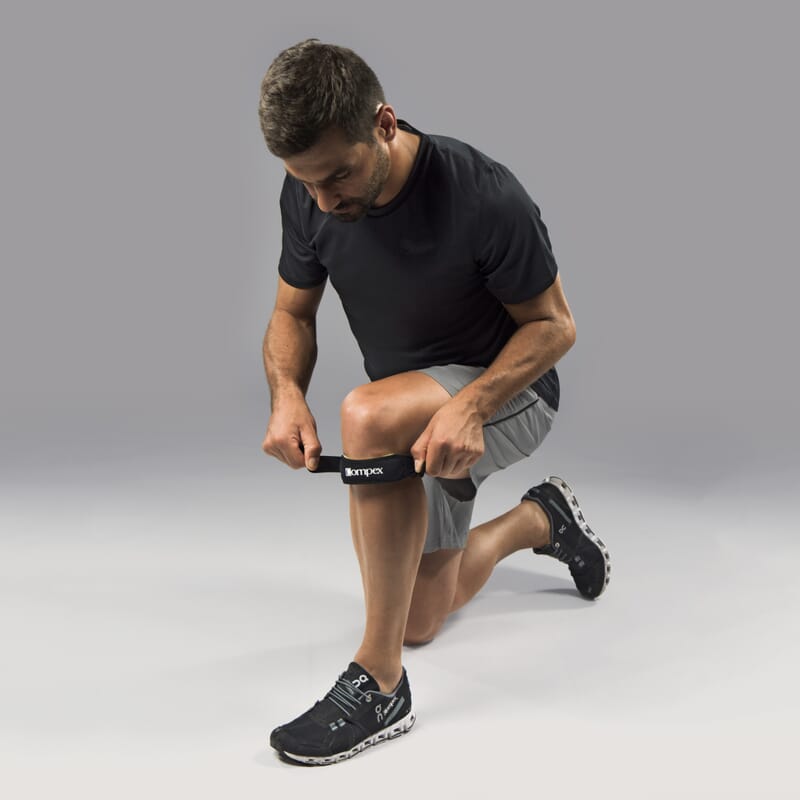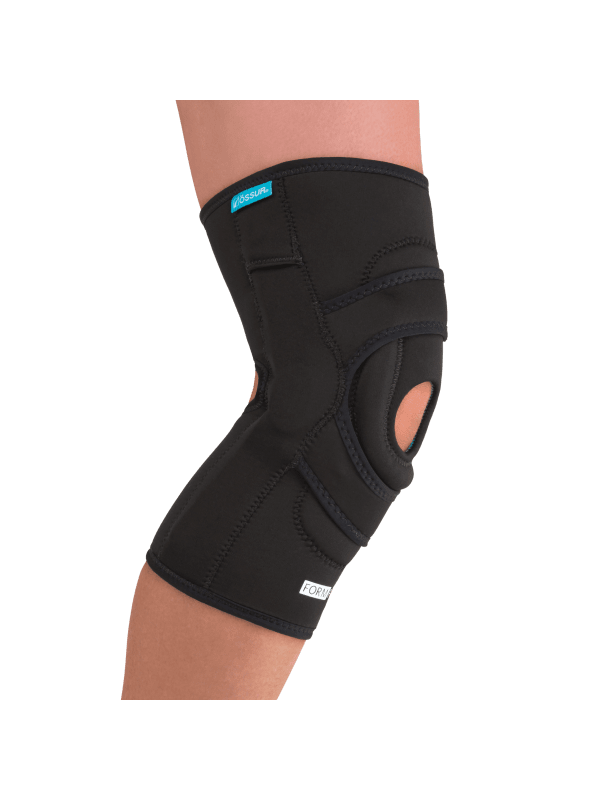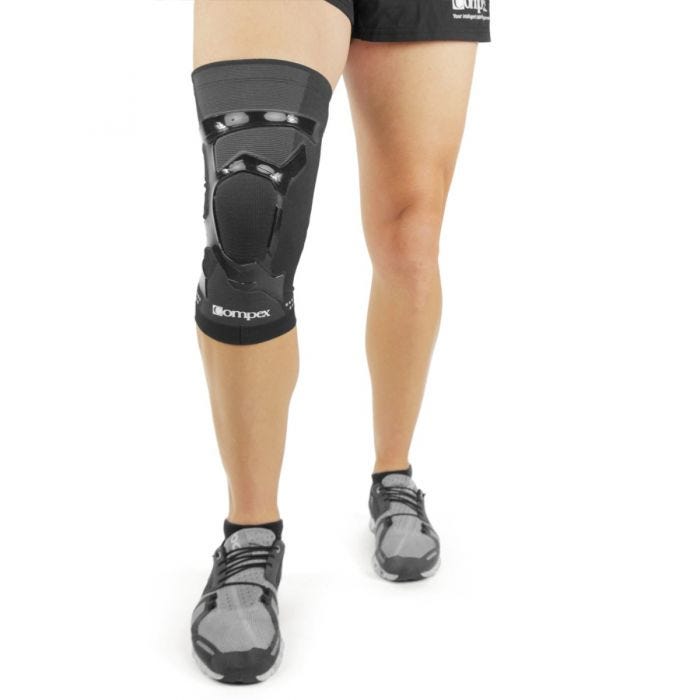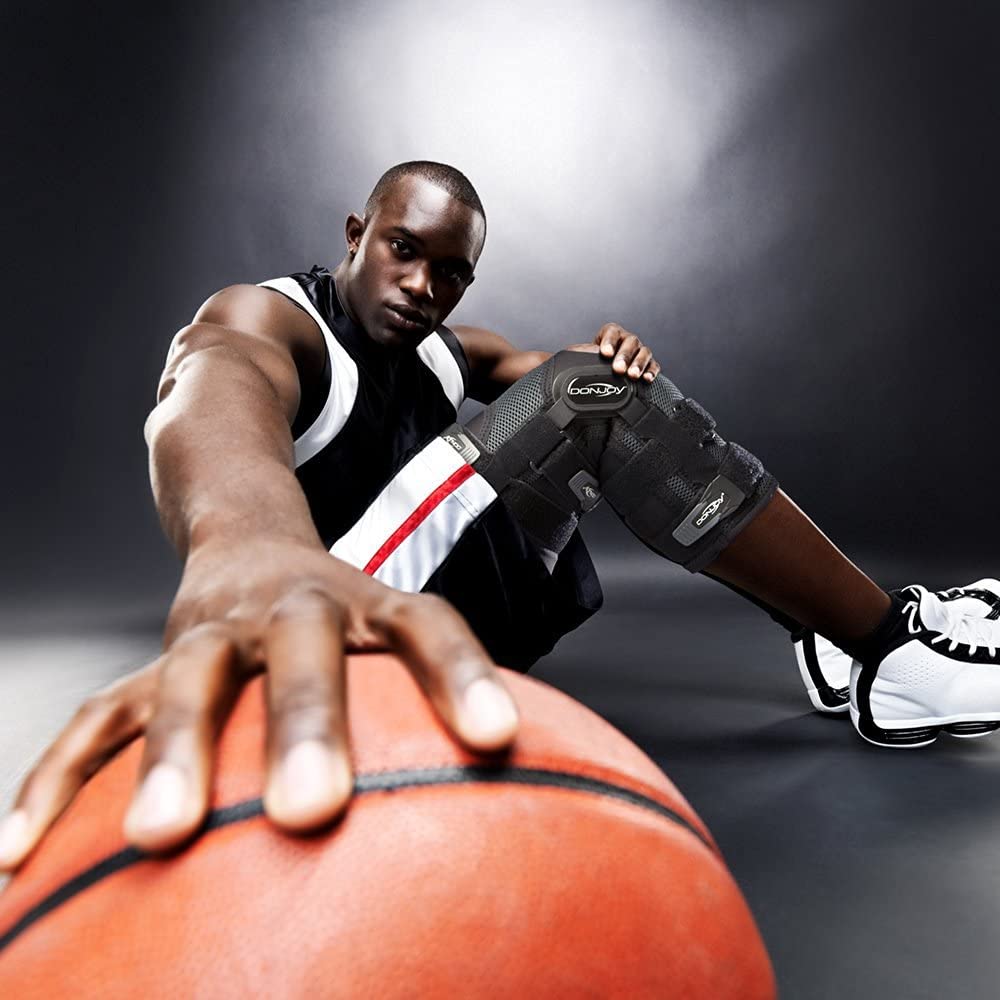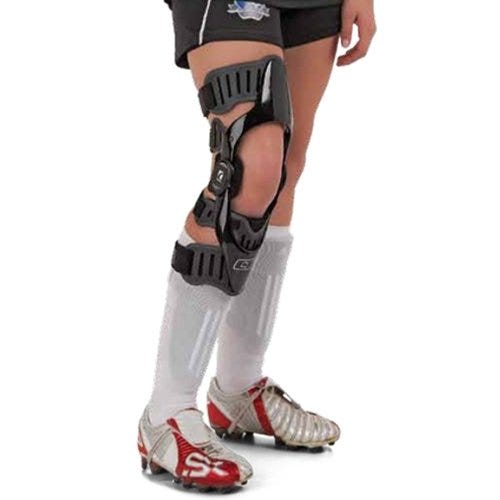Knee problems are very common for men and women of all ages. Anyone can have them. Injuries can be caused by a direct blow or sudden movement that strains the knee, or osteoarthritis in the knee, resulting from wear and tear.
Your knee joint is made up of bone, cartilage, and ligaments. When any of these structures are damaged or diseased, you will have knee problems that can cause pain, swelling, and difficulty walking.
There are several options to treat knee conditions, including physical therapy, surgery, bracing and supports. Knee braces can be used on there own, or in conjunction with other treatments for both acute (sudden) and chronic (long-term) knee conditions.
Some of the most common and well known conditions that can be supported by knee braces include ligament injuries (ACL, PCL, MCL, LCL) and Osteoarthritis.
You can also Contact our Healthcare team if you need help selecting the right device for your knee.
Patellofemoral Pain Syndrome
What is it?
- Pain at the front of your knee, around your kneecap (patella). Sometimes referred to as "runner's knee,"
- More common in people who play sports that involve running and jumping
- Pain may increase when you run, walk up or down stairs, sit for long periods, or squat
Recommended Knee Braces
- Lower profile knee braces with pull straps above and below the patella (kneecap) to put consistent tension on the kneecap during flexion and extension to realign the patella
- Lateral "J" style knee braces. Contain "J" shaped buttress on the lateral side. For additional support look for braces with hinges for enhanced stability
- Knee sleeve style braces with contoured knee pads and compression to stabilize the patella
- Browse our braces for Patellofemoral pain
Patellar Tendonitis
What is it?
- Injury to the tendon connecting your kneecap (patella) to your shinbone. Also known as jumper's knee
- Most common in athletes whose sports involve frequent jumping (basketball and volleyball). Can also impact people who don't participate in sports
Recommended Knee Braces
- Strap style supports that apply pressure to the patellar tendon, to relieve pain related to tendonitis. Some options include compression
- Knee sleeve style supports with compression and built in pads that target the patellar ligament
- Browse our braces for Patellar Tendonitis
Osgood Schlatter Disease
What is it?
- Condition that causes pain in the knee and upper shin when tendons pull against the top of the shinbone
- Usually occurs with growing adolescents
- Can get worse with sporting activities that include running or jumping
Recommended Knee Braces
- Strap style braces or sleeves that provide local pressure relief for the tibial tuberosity (bony bump on the upper part of the shin where the patellar tendon attaches the quadriceps muscles to the leg) with relaxation of the patellar tendon
- Browse our braces for Osgood Schlatter Disease
Chondromalacia Patella
What is it?
- Degeneration of the tissue (cartilage) on the underside of the kneecap (patella)
- Pain results when the knee and the thigh bone (femur) rub together
- Dull, aching pain and/or a feeling of grinding when the knee is flexed may occur
Recommended Knee Braces
- Bracing options with a built in 'c' shaped buttress or pad that will resist the movement of your kneecap moving laterally (to the side), to encourage it to stay within the natural groove of the femur
- Braces with an opening at the kneecap, so that the fabric doesn’t push the kneecap against the femur
- Browse our braces for Chondromalacia Patella
Knee Bursitis
What is it?
- Caused by inflammation of a small fluid-filled sac (bursa) near your knee joint. Bursae reduce friction between your bones and the surrounding tissue near your joints
- Most common over the kneecap or on the inner side of your knee below the joint
- Can be caused by a hit to the knee, an infection, or frequent pressure to the knee area from kneeling. Causes pain and can limit mobility
Recommended Knee Braces
- Compression style knee sleeves that will help apply warmth and compression to the area which can help relieve pain and provide stability
- Knee brace or sleeve with padding at the patella for protection
- Browse our braces for Knee Bursitis
Meniscus, Cartilage Injury
What is it?
-
Caused by twisting or rotating your knee, especially when putting your full weight on it, can lead to a torn meniscus
-
The knee has two 'C' shaped pieces of cartilage that cushion between your shinbone and your thighbone
-
Causes pain, swelling and stiffness. You may feel a 'block' to knee motion, and have trouble extending your knee fully
Recommended Knee Braces
-
If your meniscus is torn on one side/compartment (or you have developed osteoarthritis due to the bone-on-bone rubbing from the meniscus injury), you need an 'unloader' style knee brace
-
An unloader knee brace reduces the load on the symptomatic side (either the medial or lateral knee compartment)
-
If your meniscus is torn on both sides/compartments, an unloader is not recommended. Use a hinged style ligament knee brace for general knee support
- Browse our braces for Meniscus / Cartilage Injury
Knee Hyperextension
What is it?
- Common injuries for athletes, caused by a force that pushes your knee further back than its usual limit. Might feel unsteady or “buckle” when you try to put weight on it. Usually includes some pain and swelling
- It’s possible that a hyperextension can damage one or multiple ligaments in your knee, Severe hyperextensions are common causes of ACL and MCL tears but not all hyperextensions lead to ligament tears
Recommended Knee Braces
- Knee braces designed for joint stability. Braces with with adjustable hinges and/or straps on the upper and lower leg, to keep knee joint secure during movement
- Knee brace that help prevent a hyperextended knee with range of motion control such as extension stops
- Rigid ligament braces to provide maximum stability with more severe cases
- Browse our braces for Knee Hyperextension
Need help finding the best knee brace for your condition? Contact our Healthcare team for fast free advice.

